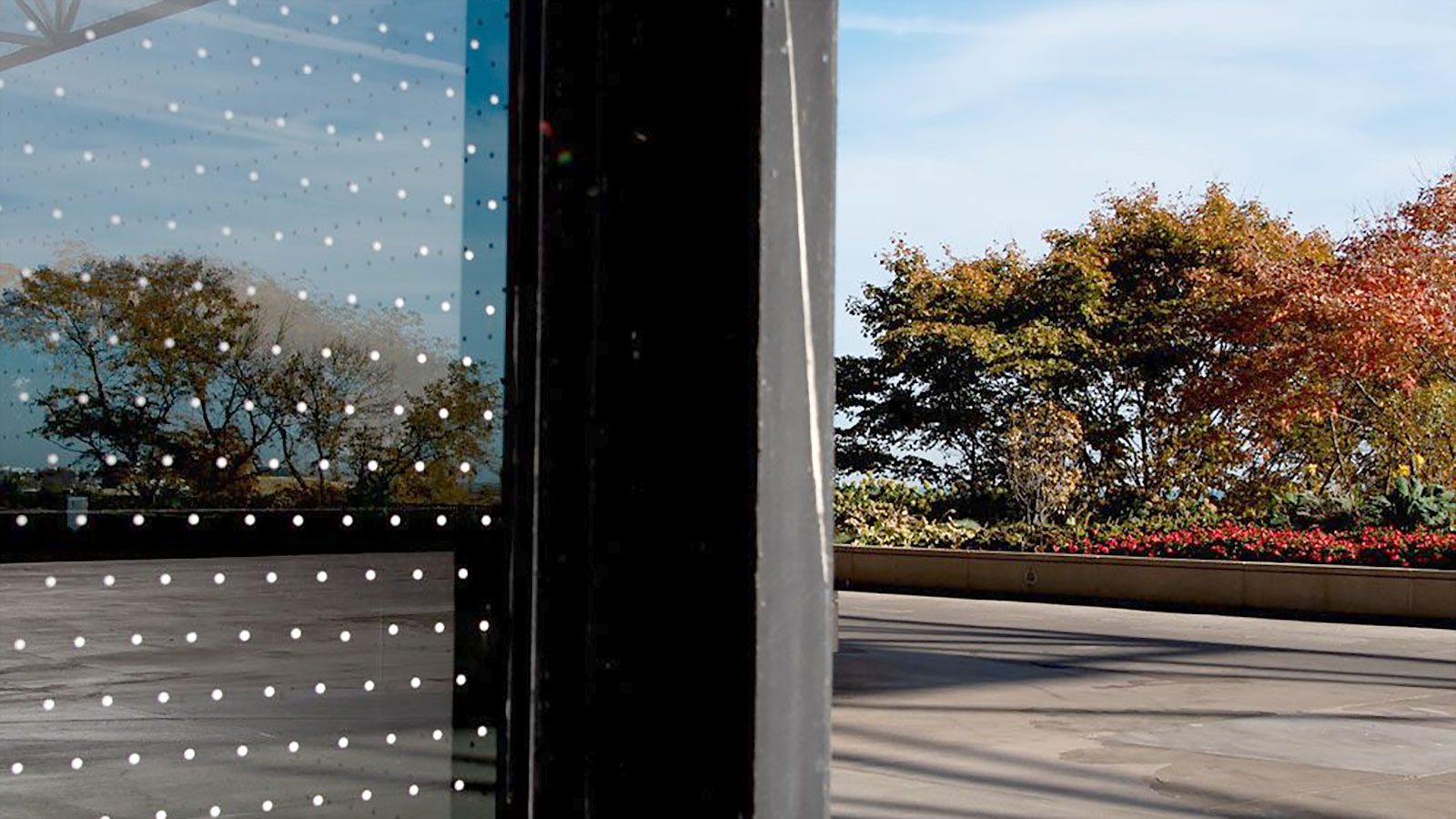
From the Winter 2025 issue of Living Bird magazine. Subscribe now.
On a warm morning in October 2024, Dave Willard, the retired bird collections curator for Chicago’s Field Museum of Natural History, walked briskly along a glassy façade on the Lake Michigan shoreline, looking for fallen birds. The building made of glass is McCormick Place, the convention center infamous to birders for being the place where close to 1,000 migrating songbirds met their deaths on Oct. 5, 2023.
Willard has taken walks like this one nearly every morning during the spring and fall migration seasons for the last 40 years, documenting the birds that crash into the building’s windows. He typically collects nearly 1,000 dead birds at McCormick Place over the course of a year. This past autumn, however, Willard says he found only six.
The difference appears to be the tiny white circles spaced every two inches along the entirety of McCormick Place’s 120,000 square feet of glassy surface. The markers were applied as part of a $1.2 million project last summer conducted by the Metropolitan Pier and Exposition Authority, which owns and operates McCormick Place, to avoid another avian catastrophe.
“Every migration is different,” Willard says, “but the prognosis is good.”
The markers appear to be doing what they’re intended to do—keep birds from slamming into the glass. On a few heavy migration days in late August and early September, when well over 100 dead birds were collected at the base of skyscrapers across the city by the nonprofit group Chicago Bird Collision Monitors, Willard found only one or two dead birds at McCormick Place. One of the volunteers in Willard’s survey effort even reported seeing a bird fly near the building and veer away as it got closer.






“If this really works here, and I’m waiting until migration is over to say if it really works, then let’s go on to the next worst building, right?” says Willard.
McCormick Place has long had a reputation as one of the worst bird-killing buildings in Chicago. The building’s location right on the lakeshore, in the middle of a migratory pathway, makes it particularly deadly to migrating American Tree Sparrows, juncos, Yellow-rumped Warblers, and dozens of other migratory species that travel through the city by night.
For several years MPEA has participated in Chicago’s Lights Out program, a voluntary effort to reduce bird strikes by turning lights off during migration, but the convention center only went dark when no staff, visitor, or clients were present. After last October’s disaster, McCormick Place officials drew the curtains inside the convention center to cover up the interior lights during bird migration. The markers are a more permanent solution.
“MPEA has always strived to be a good neighbor and environmental steward, both inside and outside our campus,” said MPEA CEO Larita Clark in a press release. “When we learned of the reported mass collision event last year, we knew that we needed to quickly make additional improvements to protect local and migratory birds as they pass McCormick Place.”
The MPEA worked with Feather Friendly, a Toronto-based company that makes scientifically tested bird-deterrent products for glass, on the project. Installers worked from June to August, carefully transferring the markers from the film to the windows across the entirety of the exterior glassy surface on McCormick Place. Feather Friendly executives now say that other building owners in Chicago are coming to the company to ask about the product that MPEA put on McCormick Place.
“When we first started, it was hard to get anyone to even think about doing something like this,” says Feather Friendly vice president Paul Groleau, who notes that the company sells products for residential buildings as well. “Awareness is at an all-time high.” More about how to make your home’s windows safer for birds.
That recognition comes not a moment too soon, says Chicago Bird Collision Monitors director Annette Prince. She notes that the city’s municipal codes currently do not require building owners and designers to make structures bird friendly, and that a new development planned along the Chicago River—a new Bally’s Casino—includes plans for a massive glass façade.
Prince says that any new buildings in Chicago should incorporate bird-friendly glass from the start.
“Other cities are doing it, and they haven’t collapsed into a pile of dust because they’re being bird friendly,” she says. “I think that we can have attractive architecture and bird safety. They don’t have to be mutually exclusive.”

